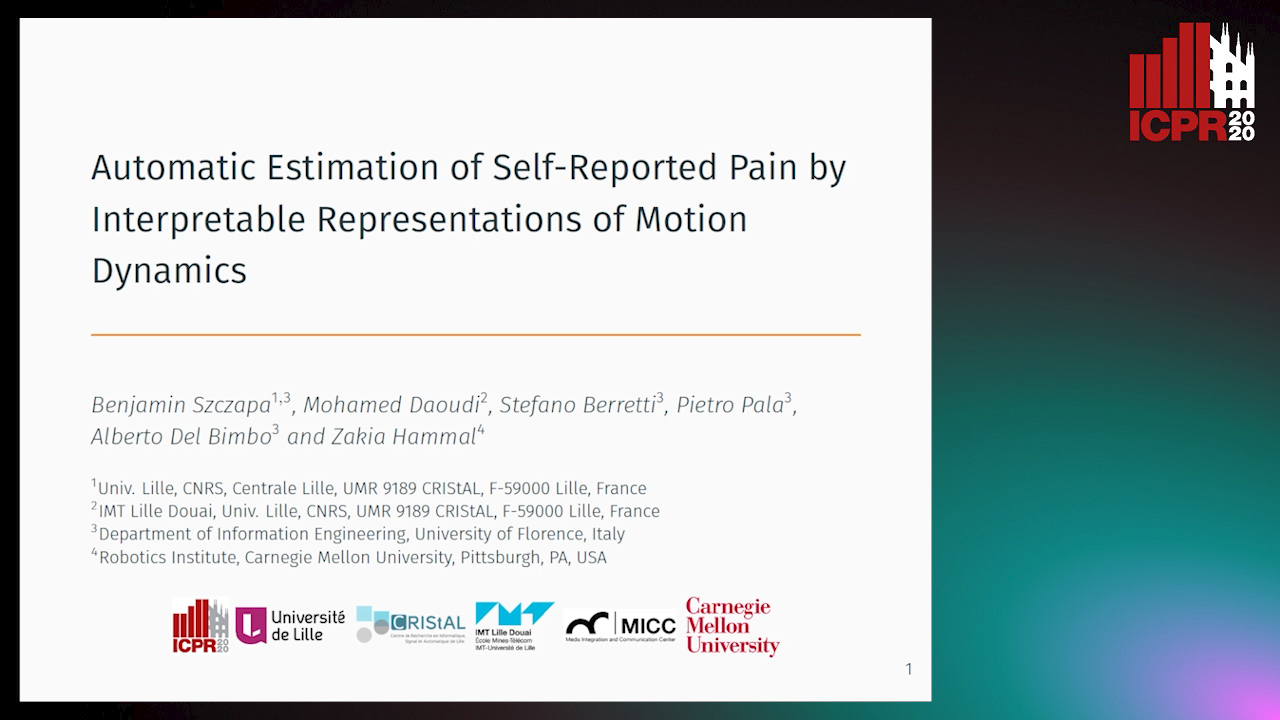Mohammed Daoudi
Papers from this author
Automatic Estimation of Self-Reported Pain by Interpretable Representations of Motion Dynamics
Benjamin Szczapa, Mohammed Daoudi, Stefano Berretti, Pietro Pala, Zakia Hammal, Alberto Del Bimbo

Auto-TLDR; Automatic Pain Intensity Measurement from Facial Points Using Gram Matrices
Abstract Slides Poster Similar
Hybrid Approach for 3D Head Reconstruction: Using Neural Networks and Visual Geometry
Oussema Bouafif, Bogdan Khomutenko, Mohammed Daoudi

Auto-TLDR; Recovering 3D Head Geometry from a Single Image using Deep Learning and Geometric Techniques
Abstract Slides Poster Similar